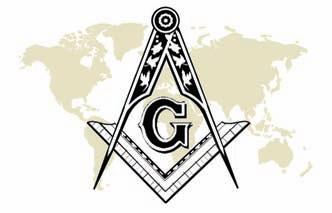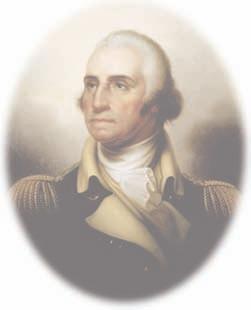
5 minute read
George Washington & Washington, DC
Akram R. Elias ,
Deputy Grand Master
THE FEDERAL CITY
President George Washington played a key role in the founding of Washington, DC as our nation’s capital. In the beginning, and between 1776 and 1800, the capital of the United States of America moved on fourteen occasions from one city to another. Following the ratification of the Constitution of the United States, George Washington, the first president, argued for the need of a permanent site for the Federal Capital. Given the rivalries that existed among the various states, President George Washington argued for the establishment of a “neutral” site that would neither be a State nor part of any State and would be located along the Patawomeke (Potomac) River. With the Act of 1790, the Congress of the United States specified the location of a federal district of “ten miles square” to be situated at any point above the Eastern Branch of the Potomac River. On March 3, 1791, at the request of President George Washington, the Congress modified the location of the federal district to include the town of Alexandria, several miles below that point – Alexandria was ceded back to the State of Virginia in 1846. Having picked Major Pierre Charles L’Enfant as the archi• “A Vision Unfolds” – Painting by Peter Waddell
Copyright 2005 Grand Lodge, F.A.A.M., of the District of Columbia tect of the Federal District, President George Washington had another hurdle to overcome – how to deal with the privately owned lands located within the district’s limits. On March 29, General Uriah Forrest hosted a meeting a meeting at his home for President George Washington to address the principal landowners of the federal district in the presence of the newly appointed commissioners. George Washington recorded his success that evening in his own diary:
“The parties to whom I addressed myself yesterday evening, having taken the matter into consideration, saw the propriety of my observations; and whilst they were contending for the shadow they might lose the substance; and therefore mutually agreed and entered into articles to surrender for public purposes, one half the land they severally possessed within the bounds which were designated as necessary for the city to stand. This business being thus happily finished and some directions given to the Surveyor and
Engineer with respect to the mode of laying out the district – Surveying the grounds of the City and forming them into lots – I left Georgetown, dined in Alexandria and reached Mount
Vernon in the evening.” [1] In September 1791, the commissioners agreed to call the federal district “The Territory of Columbia” and the federal city “The City of Washington.” Although L’Enfant was dismissed less than a year after he was hired, he was able to set the mold into which the city was formed. In fact, no other person, with the sole exception of George Washington himself, had greater influence on the city’s conception and development. [2] Following Pierre L’Enfant’s dismissal as superintendent of the Federal City, George Washington kept the pressure on to insure that construction of the new capital would stay on schedule.
• L'Enfant-Ellicott map of Washington, 1792
Library of Congress
THE WHITE HOUSE
George Washington selected the spot where the President’s House would be built. Accordingly, L’Enfant set aside space for building what he called a "palace" for the President. A competition was organized and architects submitted their own designs. President Washington traveled to the site of the new federal city on July 16, 1792 to select a design for the White House out of the nine proposals submitted. He quickly selected the submission of James Hoban, an Irishman and Freemason living in Charleston, South Carolina. Washington asked that the house be enlarged by thirty percent and include a reception hall and the present East Room. [3] Construction began with the laying of the cornerstone on October 13, 1792.
THE U.S. CAPITOL
In 1792, President George Washington and Secretary of State Thomas Jefferson proposed a competition that would award the winning design $500 and a city lot if submitted by mid-July. Seventeen plans were submitted but none was satisfactory to George Washington. In October 1792, a letter arrived from Dr. William Thornton, a Scottishtrained physician living in the British West Indies (and a Freemason), requesting an opportunity to submit his plan after the competition was closed. The Commissioners granted his request and President Washington commended the plan that was soon accepted by the Commissioners. The cornerstone of the U.S. Capitol was laid in Masonic ceremony by President Washington on September 18, 1793.
ENLIGHTENMENT
One cannot today but admire the beauty of Washington DC’s design and its harmonious layout. In fact, Washington, D.C. is the first national capital to be designed as a seat of government, and the only capital to symbolically reflect and foster guiding values and principles. The Founding Fathers envisioned a city so beautiful and balanced that it would inspire enlightenment in those who lived and worked there. George Washington played a key role in entire effort and helped cement our Fraternity’s ties to the establishment of the city through powerful symbolism. Here are a few facts for reflection on this matter: a. George Washington requested the federal district be a “square.” Was it to send a message that this new form of government was going to operate “on the square” and be virtuous in nature? b. The boundary stones of the district were laid in
Masonic ceremonies. c. Geometry is the basis on which the superstructure of
Washington, DC was conceived. An aerial view of
Washington reveals geometrical shapes such as circles, squares, triangles, trapezoids and rectangles. Our Noble Initiatory Society has a rich legacy of fostering and promoting the ideals of the Enlightenment – namely virtue, reason, liberty, faith, equality, and fraternity. Was Washington, DC meant to be what it really is – a living monument to the ideals of Enlightenment? Did “fortuna” bless the effort? Did the gods conspire on behalf of the “great experiment?” Whether one believes in destiny or providence, one must be grateful to George Washington for having had the vision, will, resolve and steadfastness to make this “dream” a reality. ■
[1] Donald Jackson and Dorothy Toohig, eds., The Diaries of
George Washington (Charlottesville: University Press of Virginia, 1979), vol. 6 [2] Christopher Weeks, AIA Guide to the Architecture of Washington D.C. (The Johns Hopkins University Press, Baltimore and London, 1994) [3] The White House Association
On asked why he became a Mason, George Washington said, “My first desire to become a Mason was due to the fact that many of Virginia’s noblest sons were members of the Fraternity. Therefore, it was not without forethought that, on Saturday evening, November 4, 1752, in the village of Fredricksburg, I was made an Entered Apprentice Mason. I passed, March 3, 1753; Raised, August 4, 1753, in Fredricksburg Lodge No. 4, A.F.&A.M.”







